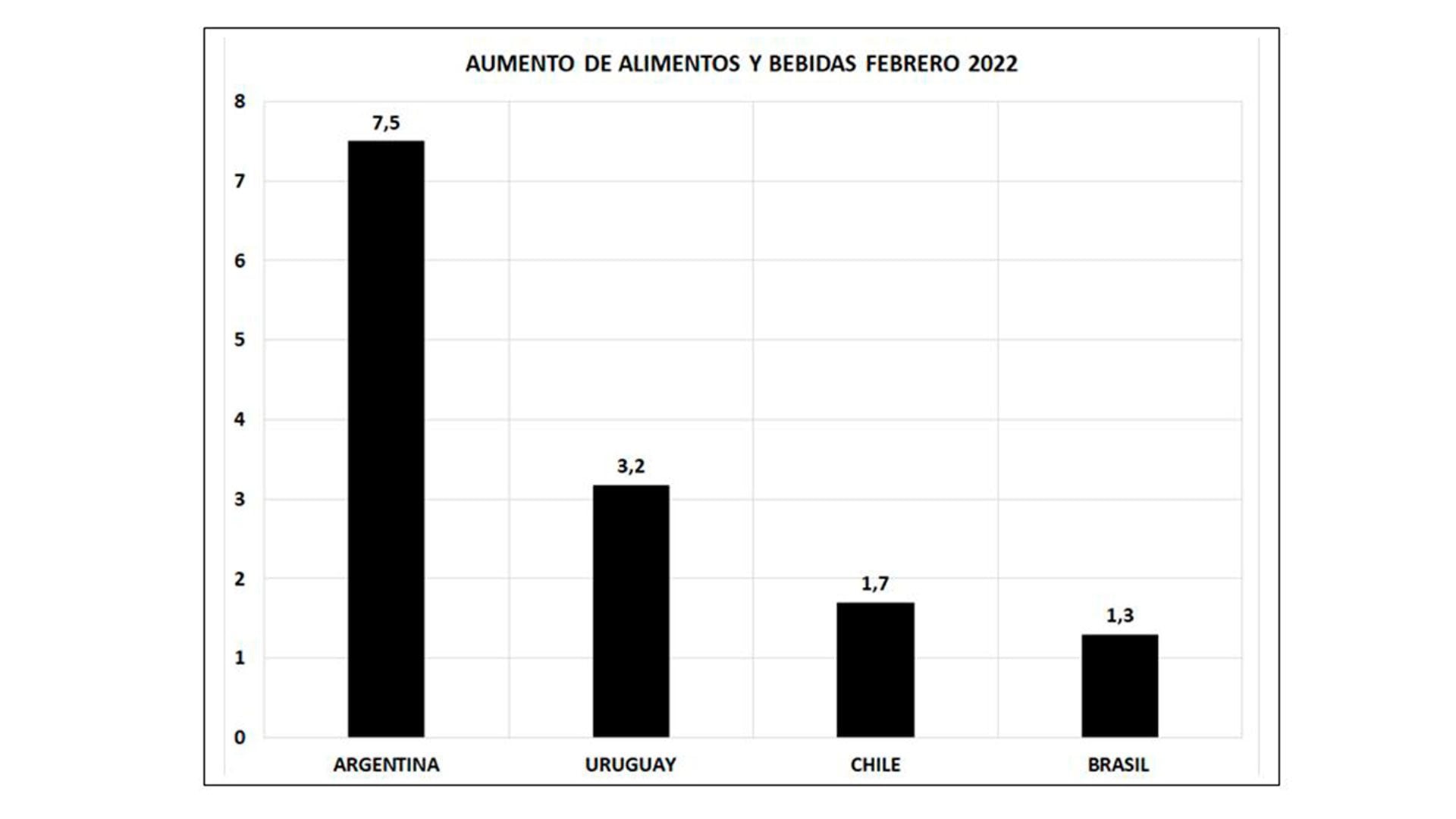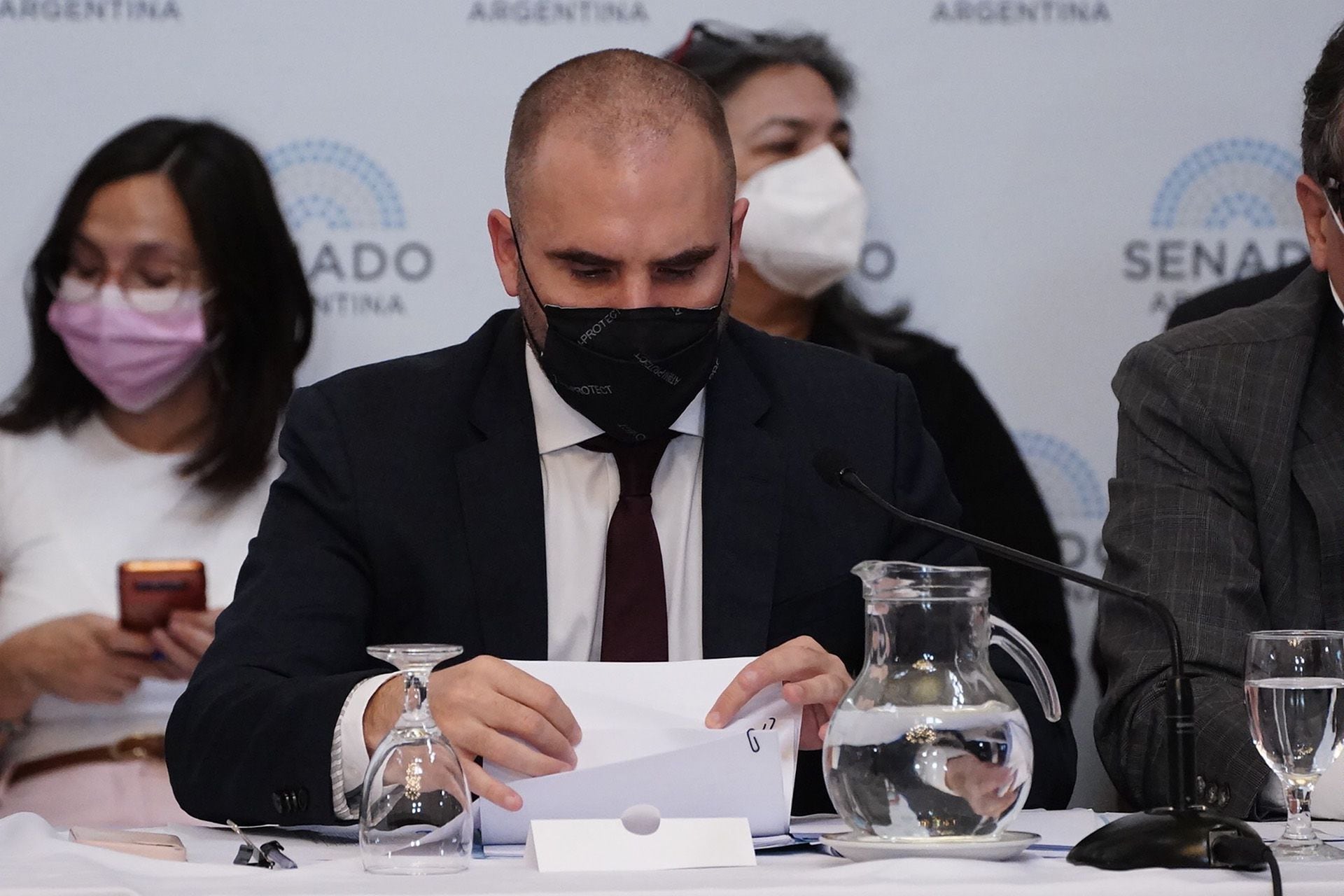
It is common for populist governments to always look for a culprit to explain the barbarities they commit. The increase in the CPI of 4.7% in February bodes badly because there have not yet been adjustments to public utility rates, nor to the exchange rate that has been rising below the inflation rate for a year.
In other words, the worst is yet to come because the adjustment of these variables starts from an inflation floor that is projected to be 73% annual inflation.
As usual, the concern is about the rise in food prices as a result of Russia's invasion of Ukraine. However. The data shows that war is not an explanation.

As can be seen in figure 1, the increase in the price of food and beverages in Argentina and in our neighbors shows that the problem is ours. In February, the food and beverage sector in Argentina rose by 7.5%, while in Uruguay, our neighbor with a diet very similar to ours, had an increase in the same category that was less than half. Chile and Brazil were far below us.
If we take the increase in food and beverage prices comparing February against February 2021 in Argentina it was 55.8%, Uruguay 10.3%, Brazil 9% and Chile 8.9%, that is, Argentina had a 5 times greater increase in food than in Uruguay, which is the one with the highest increase of the countries selected to compare.
It was obvious that the monetary issue party of 2020 and 2021 was going to have an inflationary impact. Today there is a drop in demand for currency, people get pesos off their backs before prices rise and that is not reversed by price controls.

What happens when a maximum price is set? By definition, maximum prices are placed below the level that the market is operating. That is, if the market is in equilibrium at $100, the maximum price is set somewhere below $100, for example at 90 pesos.
In this context of artificially low prices, demand increases because price is cheap and demand contracts because supply contracts.
Marginal producers disappear, those with higher production costs than their competitors, the famous shortages or the well-known black market occur.
Neither subsidies nor price controls serve to solve a purely monetary problem, because it is not that prices rise, but that the peso depreciates. The peso loses purchasing power increasing the supply of currency beyond what the market demands, due to a drop in demand for currency and retail supply of goods and services given controls, regulations, tax burden and all discouragement to produce more.
Recall that in September 2019, the food emergency law was passed, doubling the funds allocated to subsidize food. Then came the hunger table, the purchase of more expensive noodles in Argentina, the food card and countless social plans to alleviate the “hunger” that all they achieve is to discourage the culture of work and deepen the culture of gift.
It is not with regulations that will slow down the inflationary process, but with a decrease in public spending in order to be able to balance the fiscal accounts and thus stop issuing.
But although the government will reduce the rate of monetary expansion compared to last year, there is also the increase in utility rates and the exchange rate that will end up impacting the CPI and the fall in real wages.
In short, the way out to end hunger and poverty in Argentina does not go through more controls, regulations, subsidies and social plans.
The solution is to attract investment and increase the supply of goods and services because there are institutional conditions to invest and increase the productivity of the economy, create more jobs and improve real incomes.
The next few months are going to be very delicate in terms of inflation and that will generate further falls in real income, with the aggravating factor that there is no economic plan that generates confidence, let alone a government that inspires confidence.
The worst is yet to come in terms of inflation because the government insists on populism at a time when there are no longer resources to sustain the populism that wins them votes. In addition, expectations of “war against inflation” are generated and then Alberto Fernández speaks and announces nothing. Some loose concept and nothing more: zero announcements, just another promise... ministers will work on alleged next steps.
This populism should cause them to lose more votes.
Últimas Noticias
Debanhi Escobar: they secured the motel where she was found lifeless in a cistern

The oldest person in the world died at the age of 119

Macabre find in CDMX: they left a body bagged and tied in a taxi
The eagles of America will face Manchester City in a duel of legends. Here are the details

Why is it good to bring dogs out to know the world when they are puppies




